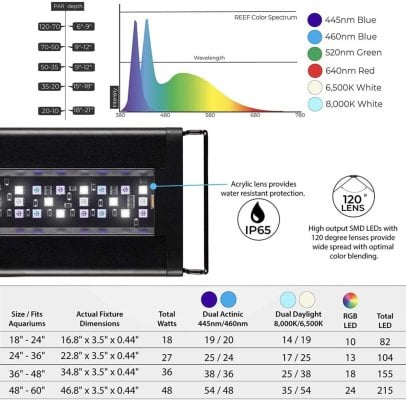I currently have a Current Orbit Marine Loop Light (36”-48”). I am curious to know under what conditions will the given PAR be achieved. As seen in the image attached, it mentions at a depth of 6” (6” from the light) the PAR will be 120, and so on. Is this when the White, Blue, Red and Green color is at 100%? Do all of the 4 colors that the light can pinpoint change the PAR linearly (if the blue set to 10% and the white is set to 10% will this equate to 20% of PAR at that depth)?



















